
Loveppears is the second studio album by Japanese recording artist Ayumi Hamasaki. It was released in Japan,Hong Kong and China on November 10,1999,through Avex Trax and the China Record Corporation,and distributed worldwide on April 10,2001,by Avex Entertainment Inc. It was entirely written by Hamasaki herself,while the production was handled by Japanese musician Max Matsuura. Musically,Loveppears is a dance album and lyrically focuses on themes of love,frustration of life,loneliness,and individualism.

Rainbow is the fifth studio album by Japanese recording artist Ayumi Hamasaki,released on 18 December 2002 by Avex Trax. Production of Rainbow had commenced after the release of Hamasaki's fourth studio album I Am... that January;All lyrics were written by Hamasaki,and Japanese producer Max Matsuura returned to produce the album. The album was Hamasaki's first to feature conversational English lyrics,where in her previous works she had only used single words.

"Surreal" is a song by Japanese recording artist Ayumi Hamasaki,taken from her third studio album Duty (2000). It was written by Hamasaki and produced by Max Matsuura. The song is a rock with elements of alternative rock. "Surreal" describes Hamasaki's madness and sense of confusion,while the themes of "Surreal" are based on Hamasaki's concept of loneliness,chaos,confusion,and the burden of her responsibilities,aimed mostly toward her public image as a recording artist. It was released as the fourth single from the album on 27 September 2000 by Avex Trax and Avex Taiwan.

"Whatever" is a song recorded by Japanese recording artist Ayumi Hamasaki for her second studio album,Loveppears (1999). It was written by Hamasaki,while production was handled by Max Matsuura. The track is Hamasaki's sixth single with Matsuura since her debut single in April 1998,"Poker Face". "Whatever" premiered on February 10,1999 as the lead single from the album. It was re-released on February 28,2001 as a CD single.

"Love (Destiny)" (stylized as "LOVE ~Destiny~") is a song recorded by Japanese recording artist Ayumi Hamasaki,serving as the second single for her second studio album,Loveppears (1999). It was released by Avex Trax in Japan and Taiwan on April 14,1999,and through Avex Entertainment Inc. worldwide in September 2008. The track was written by Hamasaki herself,while production was handled by long-time collaborator Max Matsuura. Three versions of the recording have been made available—a ballad version arranged by Tsunku,an edited version with vocals by Tsunku,and a dance-influenced version included on Loveppears.

"To Be" is a song by Japanese recording artist Ayumi Hamasaki. It served as the third single from Hamasaki's second studio album Loveppears (1999). The track was released by Avex Trax in Japan and Taiwan on May 12,1999,and through Avex Entertainment Inc. worldwide in September 2008. It was Hamasaki's final single to be distributed as a Mini-CD,a format that debuted at the start of her career in April 1998. "To Be" was written by Hamasaki herself,while production was handled by long-time collaborator Max Matsuura. Musically,it is a J-Pop that was written in third person perspective,much like the content from the parent album.
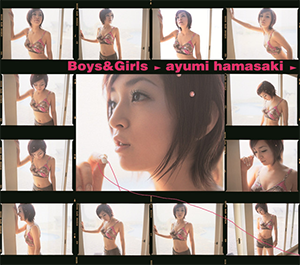
"Boys &Girls" is a song recorded by Japanese recording artist Ayumi Hamasaki,serving as the fourth single for her second studio album,Loveppears (1999). It was released by Avex Trax in Japan and Hong Kong on July 14,1999,and through Avex USA in North America in early 2001,while being re-distributed in 2003. "Boys &Girls" marks Hamasaki's first single to be made available for purchase as a maxi single with additional remixes. The track was written by the singer herself,while production was handled by long-time collaborator Max Matsuura. Musically,the song is a dance recording,a genre that heavily influences Loveppears. The single's lyrical content is written in third-person perspective.

"Appears" is a song recorded by Japanese recording artist Ayumi Hamasaki. It was released by Avex Trax on November 10,1999 as the sixth single from her second studio album Loveppears (1999),which was released on the same day. Alongside this,it has been released in several other territories with different release dates under her Western alias Ayu. It also served as Hamasaki's first limited edition single,limiting physical sales to 300,000 copies. The track was written by Hamasaki herself,while production was handled by long-time collaborator Max Matsuura. Musically,"Appears" is a dance song written in third person perspective,and is about the third person watching what appears to be a happy and loving relationship. Upon its release,"Appears" received positive reviews from music critics. Alexey Eremenko,writing for AllMusic,selected the track as the best song from the album and her career. However,an editor from CD Journal criticized the amount of remixes on the CD single.

"Kanariya" is a song recorded by Japanese recording artist Ayumi Hamasaki for her second studio album,Loveppears (1999). It was released by Avex Trax in Japan and Hong Kong on December 8,1999,and through Avex USA in North America in early 2000. The recording also served as Hamasaki's second limited edition single,with limited physical units of 300,000 copies. The track was written by Hamasaki herself,while production was handled by long-time collaborator Max Matsuura. Two versions of "Kanariya" were made available for consumption—a radio edit produced by American disc jockey Jonathan Peters,and the album version composed by Yasuhiko Hoshino. Lyrically,the song was written in third person perspective.

"Fly High" is a song recorded by Japanese recording artist Ayumi Hamasaki. It was released by Avex Trax in Japan on February 9,2000,and through Avex Entertainment Inc. worldwide in September 2008. The recording served as Hamasaki's third and final limited edition single from her second studio album,Loveppears (1999),limiting physical units to 300,000 copies. The track was written by the singer herself,while production was handled by long-time collaborator Max Matsuura. Two versions of "Fly High" were made available for consumption—a radio edit composed by HΛL,and the album version produced by Dai Nagao. Lyrically,the song was written in third person perspective.

"Vogue" is a song recorded by Japanese recording artist Ayumi Hamasaki for her third studio album,Duty (2000). It was written by Hamasaki,while production was handled by Max Matsuura. It premiered on April 26,2000 as the lead single from the album. Her third consecutive lead single to be produced by Matsuura,the song is part of a trilogy from Duty;the other two singles being "Far Away" and "Seasons".
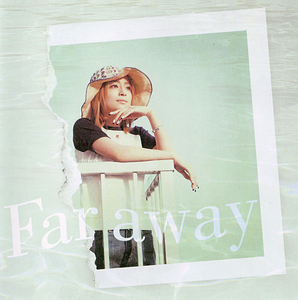
"Far Away" is a song recorded by Japanese recording artist Ayumi Hamasaki for her third studio album,Duty (2000). It was written by Hamasaki,while production was handled by Max Matsuura. It premiered on May 17,2000,as the second single from the album. The song is part of a trilogy from Duty;the other two singles being "Vogue" and "Seasons".

"Seasons" is a song recorded by Japanese recording artist Ayumi Hamasaki for her third studio album,Duty (2000). It was written by Hamasaki,while production was handled by Max Matsuura. It premiered on June 7,2000 as the third single from the album. The song is the final part of a trilogy from Duty;the other two singles being "Vogue" and "Far Away".
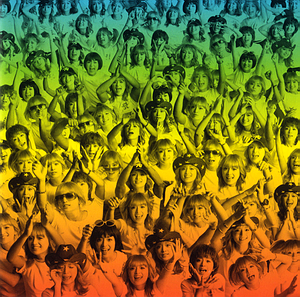
"Audience" is a song by Japanese recording artist Ayumi Hamasaki from her third studio album Duty (2000). It was released as the album's fifth and final single on 1 November 2000 by Avex Trax. Hamasaki wrote the track and Max Matsuura Lewis produced it. Dai Nagao and HΛL composed both the single and album version. The single artwork was shot by Japanese photographer Toru Kumazawa and features duplicate clones of Hamasaki,resembling an audience. Musically,"Audience" is a dance–pop and disco song.
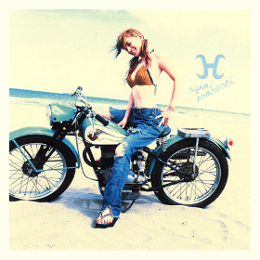
H is an EP by Japanese recording artist Ayumi Hamasaki,featuring songs later included on her fifth studio album Rainbow (2002). The EP contains the songs "Independent","July 1st" and "Hanabi",all written and co-composed by Hamasaki,alongside composer Dai Nagao and producer Max Matsuura. Hamasaki had written and recorded the three songs when she was still hurt and influenced by the events of the September 11 attacks and the completion of her fourth studio album I Am... (2002).
"Who..." is a Japanese-language song recorded by singer Ayumi Hamasaki. It served as a standard track to her second studio album Loveppears (1999),and was re-recorded and released as a promotional single by Avex Trax in Japan as part of the promotion towards her fifth greatest hits compilation album A Complete:All Singles on September 10,2008. The track was written by Hamasaki herself,while production was handled by long-time collaborator Max Matsuura. Musically,it is a J-Pop ballad that was written in third-person perspective,like the rest of the content from Loveppears. The lyrics details the encapsulation of Hamasaki,and explaining her message of her own philosophy. During its promotional release in 2008,it reached number 49 on the Billboard Adult Alternative Songs chart in Japan,and number 19 on the RIAJ Monthly Ringtones chart. It was certified Platinum by the Recording Industry Association of Japan (RIAJ) for digital sales of 250,000 units. To promote the single,it appeared on remix and greatest hits compilation albums conducted by Hamasaki.

Next Level is the tenth studio album by Japanese recording artist Ayumi Hamasaki. It was released through Avex Trax on March 25,2009 in five physical formats,and for digital consumption. The album was solely produced by Avex Trax owner Max Matsuura,whereas the album's content was written by Hamasaki herself. Additionally,it marks a return for several composers that helped construct her previous records,including Dai Nagao,CMJK,Kazuhiro Hara,HΛL,amongst others. Stylistically,Next Level is a departure from her previous albums,focusing on electronic music with elements of rock and dance.

"Feel the Love" is a song recorded by Japanese recording artist Ayumi Hamasaki. It was released in six different formats on December 25,2013 by Avex Trax,Avex Taiwan,and Avex Entertainment Inc. worldwide. It was also her first physical release in three years since her EP–single L (2010),and her first double A-side single,alongside the track "Merry-Go-Round",since "Moon" and "Blossom" that same year. The track was written by the singer,whilst production was handled by Japanese musician and long-time collaborator Max Matsuura with the assistance of DJ Hello Kitty;this marks the singer's first single to be produced with another producer outside of Matsuura. Musically,"Feel the Love" is an electronic dance song that lyrically focuses on love and having a good time.
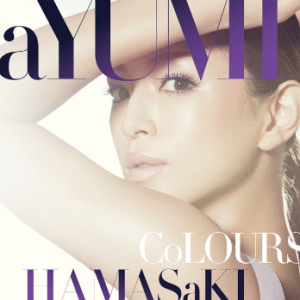
Colours is the fifteenth studio album by Japanese recording artist Ayumi Hamasaki. It was released on July 2,2014,in Japan by Avex Trax,worldwide by Avex Entertainment Inc.,and on July 18 in Taiwan by Avex Taiwan. The songs on the album were entirely written by Hamasaki,while production was led by long-time collaborator Max Matsuura;it also included a variety of Western producers such as Armin van Buuren,members from RedOne Productions De Paris and Rush,Darkchild,and Fedde Le Grand,among others. This became Hamasaki's first studio album to have not been fully produced by Matsuura,and her first album to incorporate a large amount of English language. Musically,Colours is an electronic dance music album.

"Merry-Go-Round" is a song recorded by Japanese recording artist Ayumi Hamasaki,featuring a rap section delivered by Japanese artist Verbal,for the singer's fifteenth studio album Colours (2014). It was released worldwide in six different formats on December 25,2013 by Avex Trax,Avex Taiwan,and Avex Entertainment Inc. It was also Hamasaki's first physical release in three years since her EP–single L (2010),and her first double A-side single,alongside the track "Feel the Love",since "Moon" and "Blossom" that same year. The track was written by Hamasaki,whilst production was handled by Japanese musician and long-time collaborator Max Matsuura with the assistance of M-Flo;this marks Hamasaki's first single to be produced with another producer outside of Matsuura. Musically,"Merry-Go-Round" is an electronic dance song that includes guitars and synthesizers in its instrumentation.















